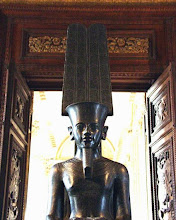History of the Jews in Argentina
 Jews have lived in Argentina for centuries, yet large Jewish populations did not appear in the country until the 19th and 20th centuries. A few Jews fleeing the Spanish Inquisition and Portuguese Inquisition settled in what is now Argentine territory, but it is assumed that they eventually assimilated entirely into Argentine society.
Jews have lived in Argentina for centuries, yet large Jewish populations did not appear in the country until the 19th and 20th centuries. A few Jews fleeing the Spanish Inquisition and Portuguese Inquisition settled in what is now Argentine territory, but it is assumed that they eventually assimilated entirely into Argentine society.
Many of the Portuguese traders and smugglers in the Viceroyalty of the Río de la Plata were widely considered Sephardic Jews, but no organized community emerged until after Argentina gained independence from Spain. After about 1810, Jews from France and other parts of Western Europe began to settle in Argentina and continued on until the mid-19th century. In the late 19th century and early decades of the 20th century, just as they did in the United States, many Ashkenazi Jews arrived in Argentina from Eastern Europe and Russia, fleeing persecution; they were often called "rusos" ("Russians") by the local population. While many of them settled in major cities, many of these immigrants acquired land through the Jewish Colonization Association and established small agricultural colonies ("comunas") in the interior of the country that mimicked the shtetls of Russia and Eastern Europe.
Between 1906 and 1912, Jewish immigration increased at a rate of about 13,000 immigrants per year, with most from Eastern Europe and Russia but others from Morocco or the Ottoman Empire. By 1920, approximately 150,000 Jews were living in Argentina. Subsequent waves of Jewish immigrants arrived from Germany after Hitler came to power in the 1930s and others emigrated to Argentina from Nazi-occupied Europe during the early and mid-1940s.
Jews in Argentina quickly came to play an important role in Argentine society, but were subject to episodes of antisemitism. In January 1919 in Buenos Aires, pogroms fomented by the police as a response to a general strike targeted the Jews and destroyed significant property. In 1946, former Nazi officials began immigrating to Argentina, allegedly with the authorization of President Juan Perón. Nazi war criminal Adolf Eichmann was later captured in Argentina by Israeli agents. At this time Jewish immigration began to wane, while at the same time the country established ties with the state of Israel. During the military junta government of 1976 to 1983, approximately 1,000 of the people killed by the state were Jews (estimates of the total number of victims range from more than 16,000 accounted for up to 30,000).
In the 1990s, the Jewish community was the subject of two major terrorist attacks, both of which remain unsolved: the Israeli Embassy was bombed in March 1992, killing 32 people, and in July 1994 the Jewish community center (AMIA) in Buenos Aires was bombed as well, killing 85 people and wounding over 200. During the economic crisis of 1999–2002, more than 10,000 Argentine Jews made aliyah to Israel.
Today, approximately 185,000-250,000 Jews live in Argentina, while other sources place the number close to 600,000. Most of Argentina's Jews live in Buenos Aires or other large Argentine cities. Argentina's Jewish population is the third largest Jewish community in the Americas (after that of the United States and Canada). The Jewish community in Argentina is by far the largest in all of Latin America.
In Argentina Jews are legally granted the two days of Rosh Hashanah, Yom Kippur, and the first two and last two days of Passover as legal holidays.
Source






